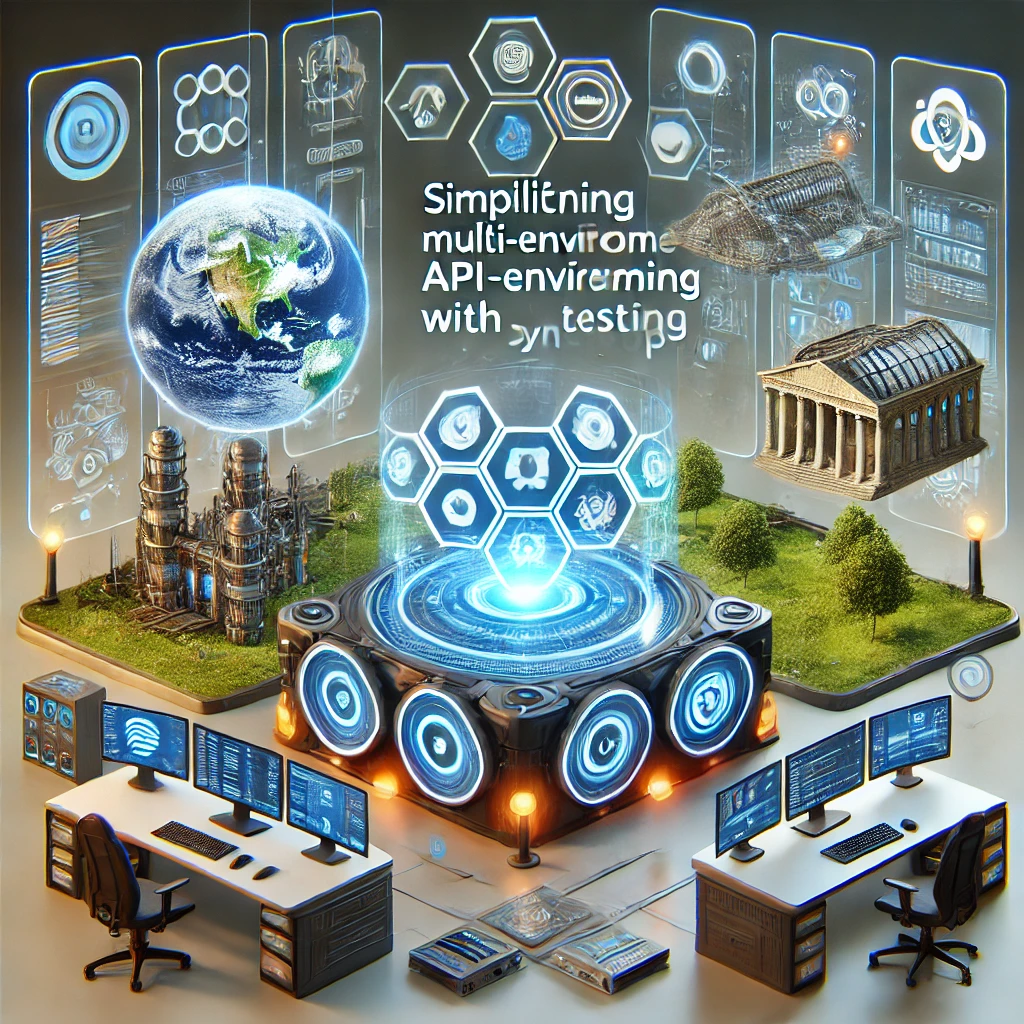Simplifying Multi-Environment API Testing with Syncloop

Why Multi-Environment API Testing is Essential
Testing APIs across multiple environments ensures:
- Reliability: Verifies API functionality and performance in different setups.
- Consistency: Detects environment-specific issues, such as configuration errors or missing dependencies.
- Scalability: Ensures APIs can handle varying loads and use cases across environments.
- Security: Identifies vulnerabilities in production and pre-production environments.
Syncloop enables seamless multi-environment testing with tools designed to handle the complexities of API testing workflows.
Key Features of Syncloop for API Testing
1. Environment-Specific Configurations
Syncloop allows developers to define and manage environment-specific configurations, ensuring APIs behave as expected in each environment.
2. Workflow Automation
Automate test cases using Ifelse and Await controls, creating dynamic workflows that mimic real-world usage scenarios.
3. Data Validation
Use Transformers to validate API responses and ensure data integrity across environments.
4. Error Handling
Implement Redo and fallback workflows to handle errors gracefully, ensuring comprehensive test coverage.
5. Real-Time Monitoring
Track test results and performance metrics in real time with Syncloop’s monitoring dashboard, identifying bottlenecks and areas for improvement.
6. Scalable Testing
Leverage Syncloop’s scalable infrastructure to simulate high traffic loads and test API performance under stress.
Steps to Simplify Multi-Environment API Testing with Syncloop
Step 1: Set Up Environments
Define configurations for each environment in Syncloop, including base URLs, authentication credentials, and environment-specific parameters.
Step 2: Design Test Workflows
Create test workflows that cover all critical API functions. Use Syncloop’s workflow automation tools to simulate realistic scenarios, such as:
- Sequential API calls.
- Conditional logic for testing error cases.
- Asynchronous operations.
Step 3: Validate API Responses
Incorporate Transformers to verify that API responses meet expected schemas and data formats. Log discrepancies for further analysis.
Step 4: Implement Error Recovery
Use Syncloop’s Redo controls to retry failed requests automatically. Configure fallback workflows to manage persistent failures.
Step 5: Monitor Test Results
Leverage Syncloop’s real-time monitoring tools to analyze key metrics, including response times, error rates, and throughput. Use this data to refine APIs and workflows.
Step 6: Test Scalability
Simulate high-traffic scenarios to evaluate API performance under load. Optimize workflows to ensure reliability during peak usage.
Real-World Applications
1. E-Commerce Platforms
Test APIs for product search, checkout, and order management across development and production environments to ensure seamless user experiences.
2. Fintech Applications
Validate API functions for payments, fraud detection, and reporting in secure, controlled environments before going live.
3. IoT Systems
Test APIs for device communication and data synchronization in different network conditions and environments.
4. Healthcare Systems
Ensure the reliability and security of APIs handling patient records and appointment scheduling across compliance-sensitive environments.
Best Practices for Multi-Environment API Testing
- Document Configurations: Maintain clear documentation of environment-specific settings to avoid errors during deployment.
- Automate Testing: Use Syncloop’s workflow automation to reduce manual testing efforts and improve coverage.
- Validate Thoroughly: Verify API responses against schemas to ensure data integrity.
- Monitor Continuously: Track metrics in real time to detect and address issues promptly.
- Plan for Scalability: Simulate load tests in staging environments to prepare for high traffic in production.
Why Choose Syncloop for API Testing?
Syncloop provides a unified platform for managing and testing APIs across multiple environments. With its robust features for workflow automation, data validation, and real-time monitoring, Syncloop simplifies the complexities of multi-environment API testing, enabling developers to deliver reliable, high-performing APIs.
Conclusion
Multi-environment API testing is essential for ensuring reliability, scalability, and security in today’s interconnected applications. Syncloop equips developers with the tools to manage configurations, automate workflows, and monitor performance across environments. By leveraging Syncloop’s capabilities, you can streamline the API testing process and deliver exceptional results.
Back to Blogs